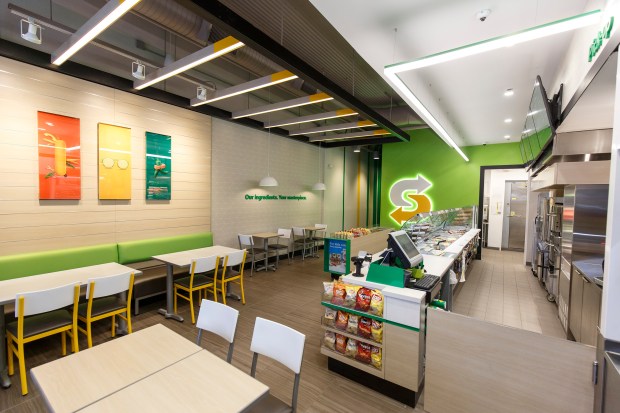The Retail Pulse: ‘Eat Fresh’ Goes Stale

It appears that “Eat Fresh” has gone stale.
Last week, Subway — the world’s largest restaurant chain — announced it would be closing roughly 500 of its nearly 26,000 U.S. stores. That’s after closing 800 stores in 2017.
But according to the company, these moves are less of a failure and more of a strategic retreat. The sandwich chain will be redirecting its focus to international expansion even as it loses market share in the U.S. Subway has 44,000 locations worldwide, all of them independently owned.
“Store count isn’t everything,” CEO Suzanne Greco told The Boston Globe. “It’s about growing the business. We want to be sure that we have the best location. We focused in the past on restaurant count. We’re focused now on strengthening market share.”
Selecting better real estate will be one major aspect of that, she said — but more significant is the international opportunity.
As a high-profile American brand, Subway may have some luck with its plans for international expansion — it plans to open more than 1,000 locations abroad this year — but it appears that America has already moved on.
For several years, the quick-service sandwich shop has been losing market share to fast food chains like McDonald’s and to healthy fast-casual destinations like Panera, Au Bon Pain and those trendy bowl-style restaurants serving locally sourced produce and hormone-free meat.
Subway’s domestic system sales fell 4.4 percent last year as a result.
Some experts called the brand “tired” and in need of an update. This is exactly what Subway tried to do last year when it unveiled a new logo, bright, modern store layouts with free WiFi and self-ordering kiosks and began eliminating antibiotics from some of its products — and again with its $25 billion rebranding campaign in January.
While Subway was doing its thing, food trucks, grab-and-go selections at grocery stores and a wide variety of fast-casual dining options debuted, selling fresh for less.
“It’s just not what people want anymore,” Bob Phibbs, CEO of New York consultancy The Retail Doctor, told The Washington Post. “If you’re in a major metropolitan area, you’re looking for that green salad place. You’re not saying, ‘Let’s all go to Subway and order through the sneeze guard.’”
Since its founding more than 50 years ago, Subway has gained traction by marketing its sandwiches as a healthier lunch option that could be prepared just as quickly as burgers and fries.
However, noted the Post, little about the restaurant has changed in the last quarter-century — and if there’s one constant about consumers, it’s that they’re always changing. Any brand that doesn’t keep up will get left behind.
In Other Brick-And-Mortar News…
Bon-Ton stores filed for Chapter 11 bankruptcy protection this week and is reportedly exploring a sale, according to Fortune. The company plans to close 40 of its 260 brick-and-mortar stores, which include not only Bon-Ton-branded stores but also Carson’s, Elder-Beerman, Herberger’s and Younkers.
Bankruptcy protection will reportedly enable the company to close stores faster, breaking its losses and keeping operations running in the meantime. The retailer said it has secured $725 million in debtor-in-possession financing as the case proceeds through bankruptcy court. A sale could potentially take place, or the company may decide its best interest would be to divide into smaller units.
GNC plans to close roughly 200 stores throughout the year, although the health supplement retailer seems to be otherwise healthy, reporting same-store sales growth of 0.5 percent — the third straight quarter of positive growth. Its gross profit rate climbed to its highest in six quarters at 34.1 percent.
Company officials said GNC’s private label brands are doing well. Meanwhile, the sale of LuckyVitamin in September 2017 made a significant dent in revenue — to the tune of $22.7 million.
GNC terminated its Gold Card member pricing program but increased participation in its loyalty membership program, which includes PRO Access enrollees.
Overall, the retailer’s current position appears to be the result of natural give-and-take fluctuations, and it doesn’t seem to be in dire straits just yet.
Lease renegotiations and relocation opportunities are under discussion and may affect the number of store closures necessary. At the same time, GNC does plan to open a small number of new store locations in 2018, potentially mitigating the effects of the closures.
In better news, the Gap announced plans to open 60 new Old Navy stores and remodel around 150 existing ones this year, even in light of a disappointing performance by the primary Gap brand and its other subsidiary, Banana Republic.
The apparel retailer is reportedly shifting its focus to Old Navy and its Athleta brand while shuttering around 200 struggling Gap and Banana Republic locations by 2020.